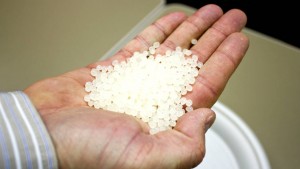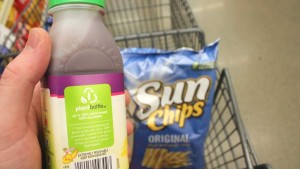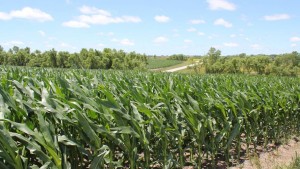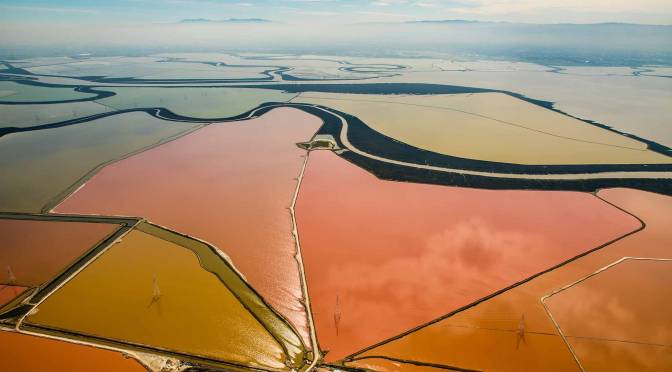“In the first three years of operation we saw triple-digit growth,” he said. “Almost every year it’s been double-digit growth. When the worldwide economy fell in 2008-2009 that slowed us down, but even then we had growth. Now that the economy is coming back we’re seeing very strong growth again.”
Nature Works production grew in the range of 20-30% in the last year. That kind of growth is happening across the bioplastic industry. Kent Furst is an analyst with the market research firm, the Freedonia Group, based in Cleveland. He says even traditional plastic makers are investing bioplastic.

“Whether you look at it in pounds or dollars, it’s really growing very fast,” Furst said. “We expect the industry to double in size in the next 3 or 4 years.”
That kind of growth is impressive, but bioplastics are actually less than 1 percent of the overall plastics market. Still, Furst says bioplastics are beating even the most optimistic forecasts. So why are companies using more bioplastic now? Furst says consumer interest is part of it. More people are shopping for sustainability. But it is the price of oil that is making it affordable for manufacturers to make the switch.
“With the price of oil and natural gas in the early part of the last decade being so low, you didn’t see as much actual market interest in bioplastics,” Furst said. “But as the price of oil and natural gas rose in the later part of the decade I think that’s when you saw how fast bioplastics could be competitive with conventional plastics on price.”
Searching the shelves of a supermarket in Lincoln, Nebraska it is still difficult to find bioplastic, but a couple examples show how some major corporations are beginning to buy in. A bag of Sun Chips is made by Frito-Lay, which is owned by Pepsi Co. The bag is made from Nature Works bioplastic, so both the container and the food inside are made of corn. Pepsi also announced that it is developing a 100% plant-based soda bottle. An Odwalla juice bottle made by Pepsi’s rival, Coca-Cola, is made with bioplastic from the Brazilian company, Braskem. They make plastic from sugar cane. Coke also announced it is coming out with a soda bottle that is 30% bioplastic.

But not all biplastics are made equal and that could start to cause some problems as they become more common. Paul Fowler, Executive Director of the Wisconsin Institute for Sustainable Technology, describes a growing bioplastics divide.
“Bioplastic could mean that the material is biodegradable, or it could mean that it’s bio-based, or it could mean that it’s both,” Fowler said.
The differences in chemistry among bioplastics mean that some plant-based containers are biodegradable but hard to recycle. Others are easy to recycle but do not biodegrade.
Take, for instance, the Sun Chips bag made from Nature Works bioplastic, called PLA for polylactic acid. What sets PLA apart is that it is completely biodegradable, in the right conditions. But not many recyclers handle PLA because it can contaminate the traditional recycling stream.
The Odwalla bottle on the other hand is made from Braskem bioplastic. It is made from sugar, but after it has been used it is no different from a bottle made from oil. It can be recycled almost anywhere in the country, but it does not biodegrade. So to compost or recycle? Fowler says there is room for both.
“If you consider the landscape for all the various products that are made from plastics, then there is a space for everyone within that landscape,” Fowler said.
But Fowler says it does leave consumers with a lot to learn. As more bioplastic shows up on grocery store shelves, sustainable minded consumers will need to be prepared to choose from new shades of green.
Additional Links:
 Recently, companies like Coca-Cola, Pepsi, and Heinz ketchup have determined that plastic made from plants, not oil, makes sense both for the environment and for business. The growing demand has meant a boom in the bioplastic industry and could mean changes to the plastic bottle as we know it.
Recently, companies like Coca-Cola, Pepsi, and Heinz ketchup have determined that plastic made from plants, not oil, makes sense both for the environment and for business. The growing demand has meant a boom in the bioplastic industry and could mean changes to the plastic bottle as we know it.

